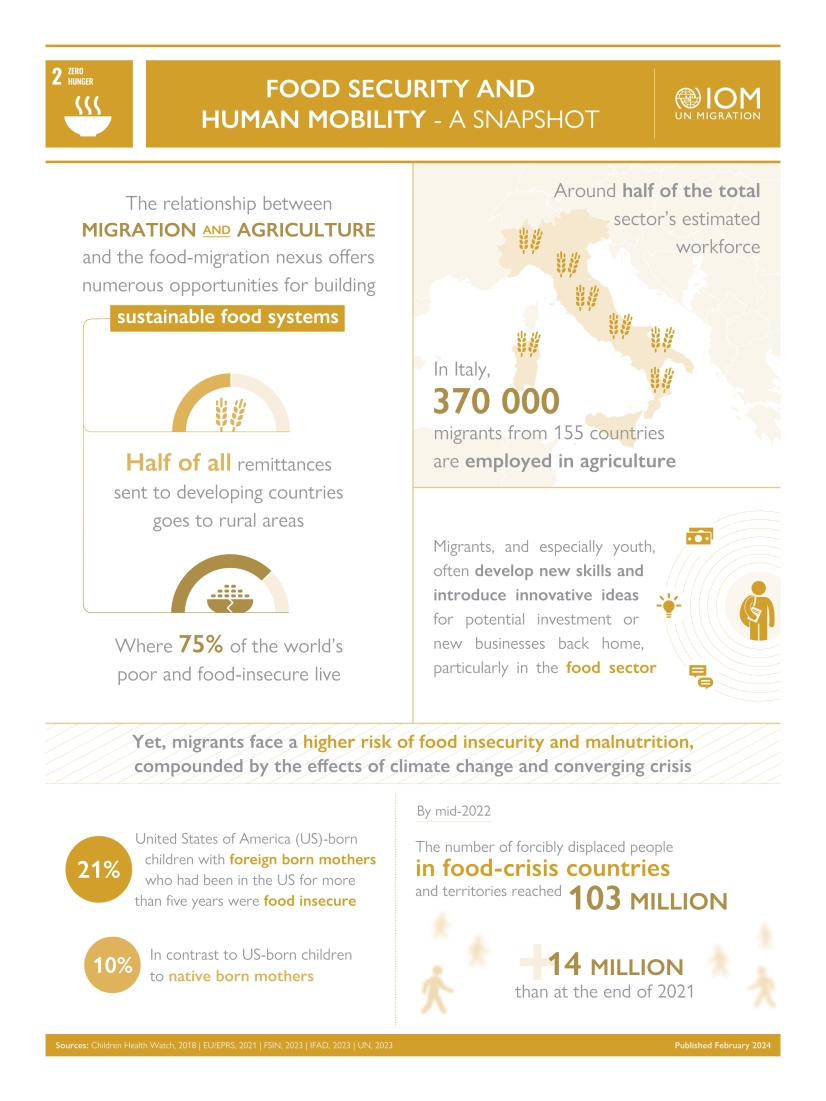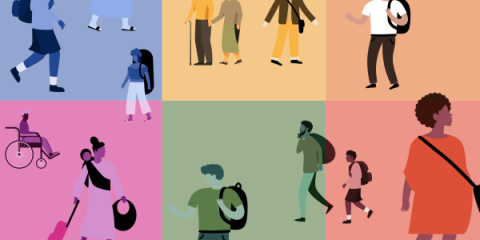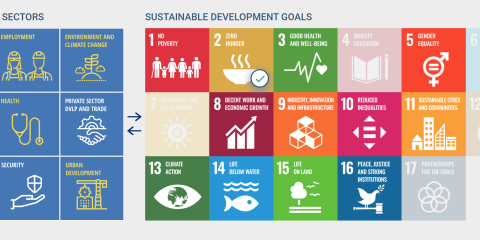
While the relationship between food security and human mobility may look different in different places, migrants can be at higher risk of food insecurity and malnutrition-related conditions than non-migrants.

While the relationship between food security (SDG 2) and human mobility may look different in different places, migrants can be at higher risk of food insecurity and malnutrition-related conditions than non-migrants. Food security can be considered one of the dimensions influencing people to migrate. Many migrants are also key agricultural workers, getting food onto tables.
SDG 2 aims to “end hunger, achieve food security and improved nutrition and promote sustainable agriculture”
Achieving food security worldwide can either serve as a barrier or an accelerator for migration within and between countries. Migration can increase food security in areas of origin, e.g. through remittances (WFP, 2023). Nevertheless, migrants may themselves be at risk of food insecurity on their migration journey and in destination areas. Food security contributes to the desire to migrate, but does not necessarily increase rates of migration.
Where Are Migrants in SDG #2? from IOM GMDAC on Vimeo.
At the same time, migrants are often key agricultural workers throughout the world, getting food on our tables. Migrants make up a disproportionate share of seasonal farm and agricultural workers, fruit pickers, store owners and food stall operators, food transporters and warehouse operatives, etc. In Italy alone, 27% of the documented agricultural workforce are migrants (European Parliament, 2021). Many countries have specific employment visas for these key sectors, and food chains rely on mobility.
Enriching Rural Communities Through Migration for Sustainable Agriculture from IOM BRUSSELS MMICD PROJECT on YOUTUBE.
Vist the M4D Net page on the linkages between SDG 2 and migration.
Hunger, malnutrition and migration are explicitly related to SDG 2 but also contribute to other SDGs, such as SDG 10.2., 10.7 or 10.c.
SDG 10.2 “By 2030, empower and promote the social, economic and political inclusion of all, irrespective of age, sex, disability, race, ethnicity, origin, religion or economic or other status”
People of different genders, people with disabilities, LGTBQI+ people and people from different castes or ethnicities can be often more vulnerable to food insecurity in areas with socio-cultural gender inequalities. But empowering and promoting the inclusion of all people in decision-making and policies can reduce their vulnerability and harness the full potential of including everyoneto reduce food insecurity. Learn more about SDG 10.2 here.
SDG 10.7 “Facilitate orderly, safe, regular and responsible migration and mobility of people, including through the implementation of planned and well-managed migration policies”
Migration policies which address and anticipate the impacts of food insecurity can contribute to safer outcomes for migrants and communities. When enabling conditions exist, migrants’ skills and social and financial capital can support sustainable land management practices, disaster preparedness and remittances to combat food insecurity. Learn more about SDG 10.7 here.
SDG 10.c: “By 2030, reduce to less than 3 per cent the transaction costs of migrant remittances and eliminate remittance corridors with costs higher than 5 per cent”
Remittances from migrants to their households in origin countries are vital for improving food security in origin communities, reducing vulnerability and promoting development. Reducing costs associated with sending money across borders increases the benefits for receiving communities. Learn more about SDG 10.c here.
Where Are Migrants in SDG #10? from IOM GMDAC on Vimeo.
Disclaimer: This webpage curates public information and data. The opinions expressed in this webpage are those of the authors and do not necessarily reflect the views of the International Organization for Migration (IOM), nor its Member States and other stakeholders. The designations employed and the presentation of material throughout the webpage do not imply expression of any opinion or endorsement whatsoever on the part of IOM, its Member States and other stakeholders concerning the legal status of any country, territory, city or area, or of its authorities, or concerning its frontiers or boundaries. While the portal section "Food security" has been made possible with funding from the German Federal Foreign Office and the Federal Department of Foreign Affairs (FDFA) Switzerland, the contents on this section do not necessarily reflect their official policy or position.





